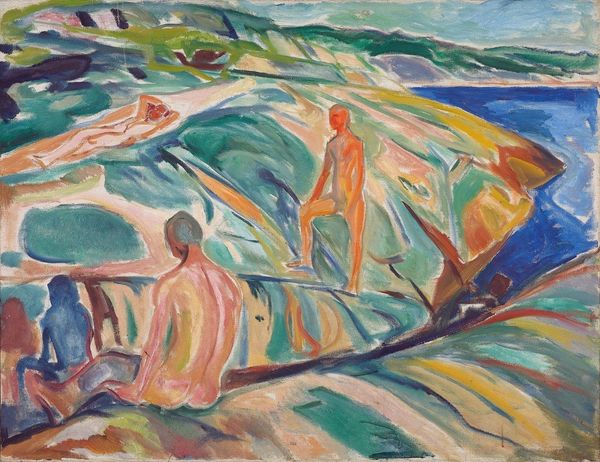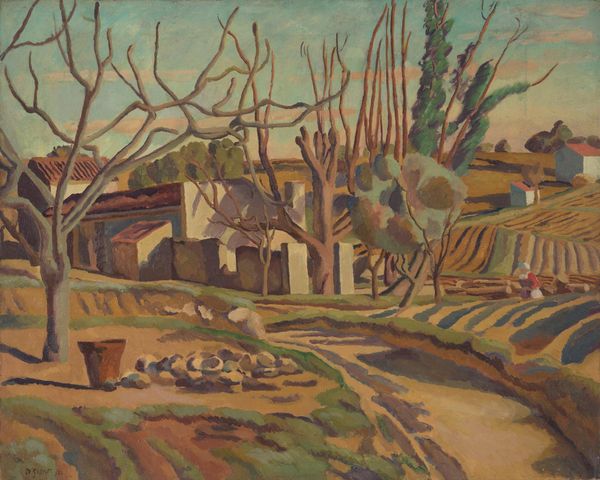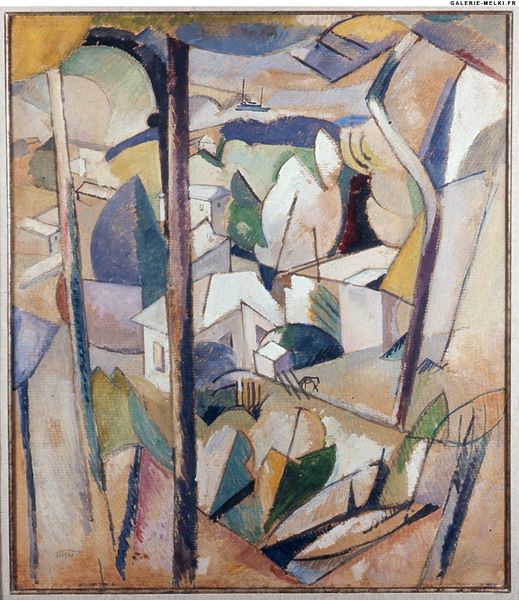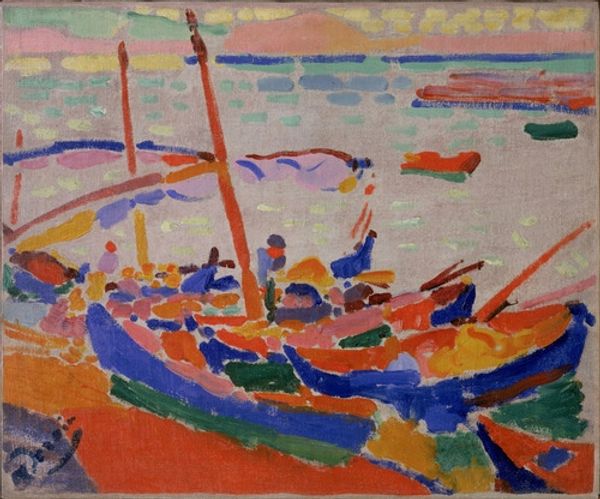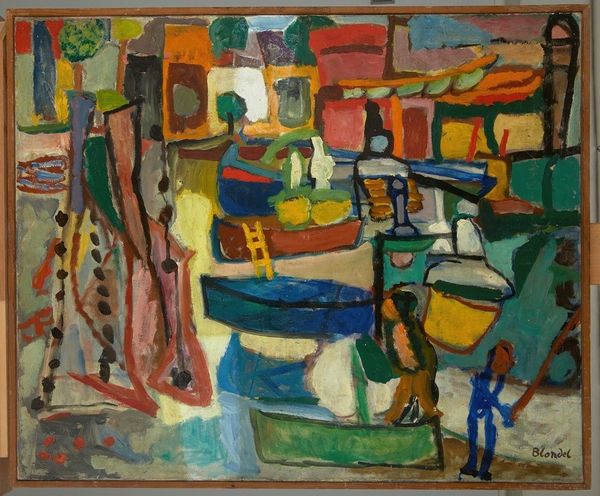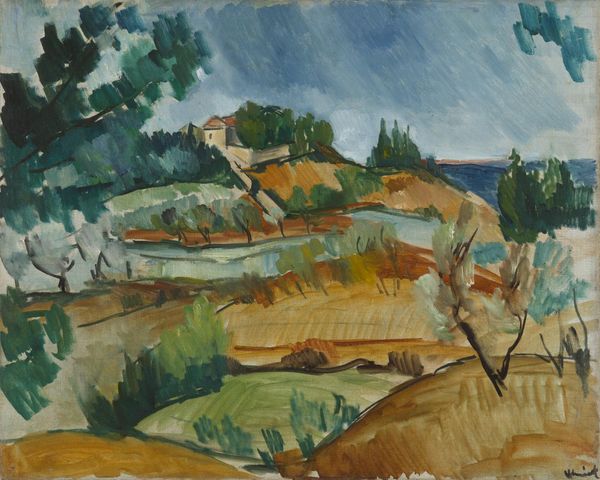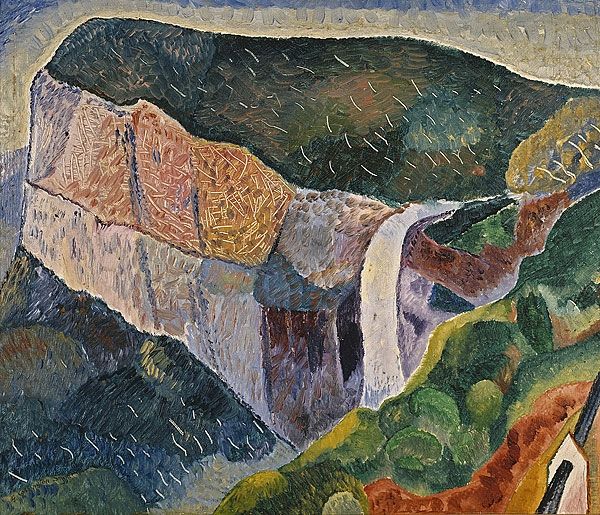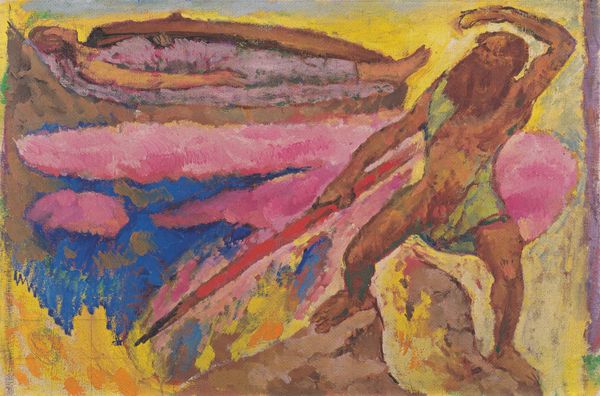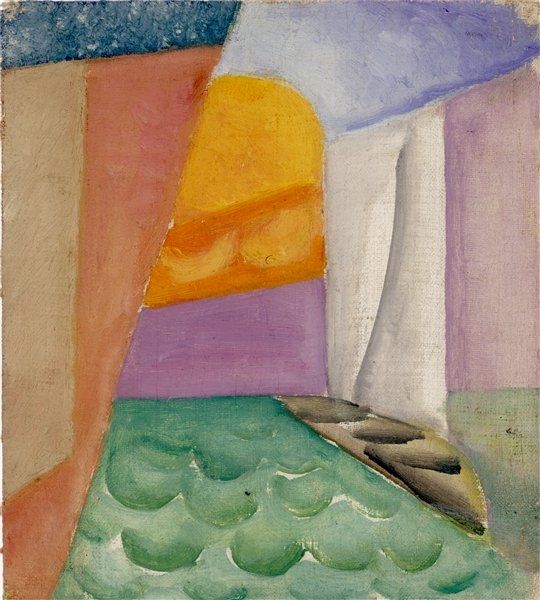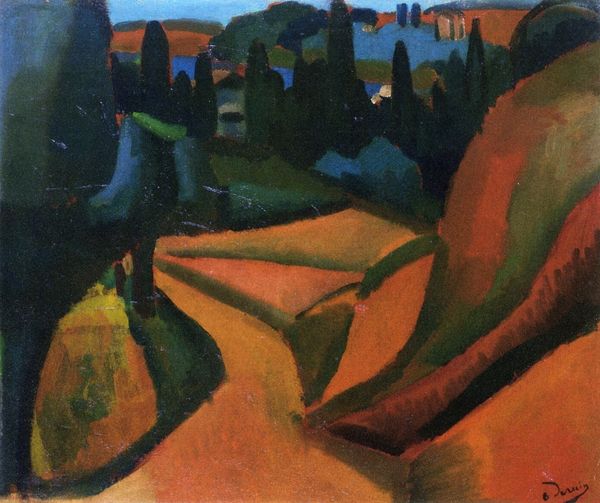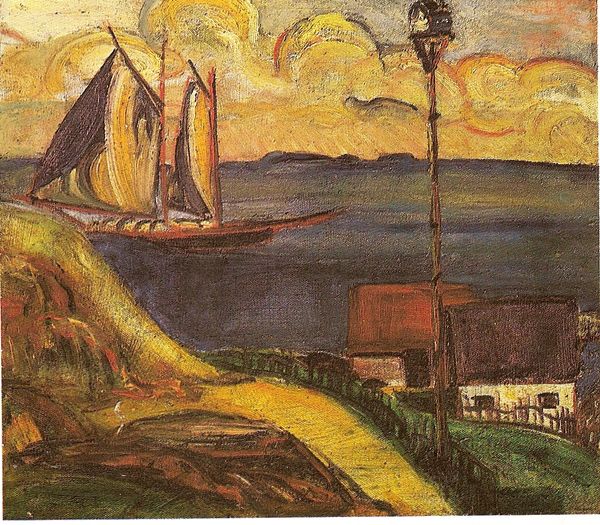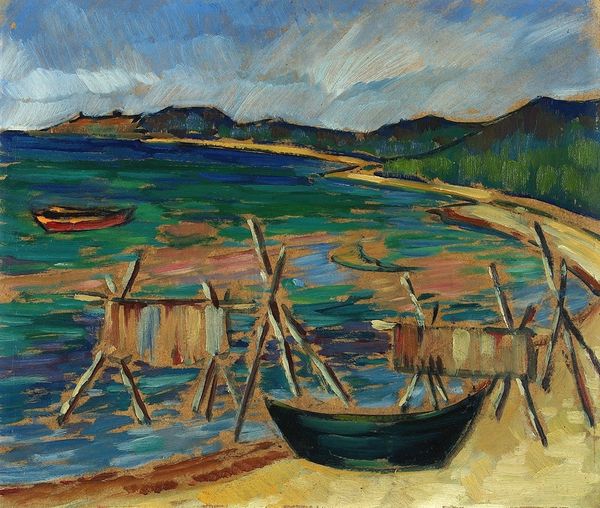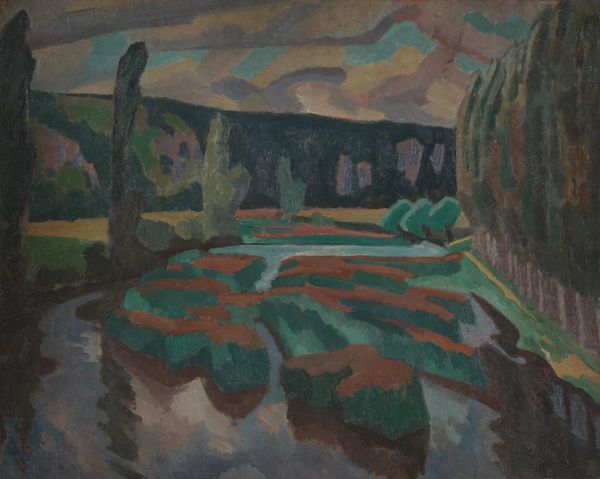
Copyright: Spyros Papaloukas,Fair Use
Editor: So this is "Arsenal Mount Athos" by Spyros Papaloukas, painted in 1935 using oil on canvas. I’m struck by the vibrant color and how it almost vibrates off the canvas, giving it a slightly unsettling feeling. How do you approach a piece like this? Curator: A Formalist lens compels us to first consider the pictorial structure. Note the emphatic use of color, its dissonance and near-arbitrary application. How do these elements relate to the representation of the subject matter itself? Editor: I see what you mean about the colors being sort of ‘arbitrary,’ or at least heightened. It is not like it's naturalistic. It's drawing my eye everywere at once! Is that an intention here to fracture how we percieve a picture plane, what about composition and material? Curator: Precisely. Observe the composition: planes are flattened, perspective is distorted. What is the impact on our perception of depth and space? The texture created by the oil paint becomes a significant aspect itself. Can you perceive any way the artist attempts to subvert our common visual understandings through colour, composition, materiality? Editor: Yes! The flattened perspective makes the scene feel almost like a collage of shapes and hues, rather than a realistic depiction. The oil paint’s texture emphasizes this artificiality; it is not trying to 'hide' itself behind mimetic representation. The picture plane is actively created. What is this, Fauvism? Curator: Indeed, the canvas declares itself as constructed rather than referential. And in its Fauvist influences, one might find traces of expressionism! It is, as a whole, a self-contained system of visual relationships. Editor: This has opened my eyes. Instead of searching for some deeper 'meaning', I need to keep observing and focus on the relationships of color and form. Thank you! Curator: It is through these relationships that meanings emerge. My pleasure!
Comments
No comments
Be the first to comment and join the conversation on the ultimate creative platform.
